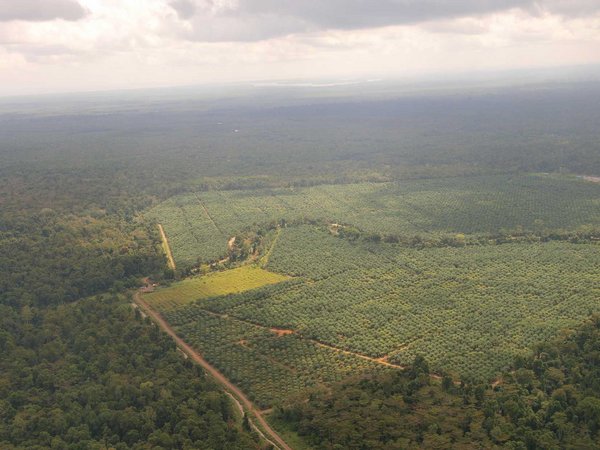- Share this article
- Subscribe to our newsletter
Converting oil palm plantations into rainforest
An alliance of conservationists and researchers is converting oil palm plantations into near-natural rainforests on Borneo, the Forschungsverbund Berlin e.V. (FVB) reported in late November 2019. In this way, the high biodiversity of the tropical rainforests and an important wildlife corridor can be restored. The research project is to serve as a blueprint for future conversion measures in Malaysia and Indonesia.
The aim is to establish a wildlife corridor between the Tabin and Kulamba protected areas in the east of the Malaysian state of Sabah, the researchers say. Currently, the protected areas are separated by oil palm plantations. These plantations pose a particular threat to orangutans and dwarf elephants. The animals go to the plantations in search of food and are often killed there because of the damage they cause.
Establishing wildlife corridors
The first step in establishing the wildlife corridor is to secure the central palm oil cultivation areas and the adjacent areas. In the next step, the areas will be transferred to the Government of Malaysia, which will then transfer these areas to the highest protection status ("Protected Forest Reserve Class 7"), according to the researchers.
Afterwards, research will be conducted into the best way to convert oil palm plantations into near- natural rainforests and how the newly acquired habitat is used by wild animals. Researchers see the danger of palm oil monocultures destroying the soil in the long term. These degraded areas can then be used less and less for agricultural purposes.
In Southeast Asia, deforestation mainly affects the ecologically valuable lowland rainforests, which are predominantly replaced by oil palm plantations and other monocultures. However, this intensive agricultural use not only destroys the habitats of many animal and plant species, but also causes lasting damage to the soil and climate.
The project contributes to the United Nations Sustainability Development Goal (SDG) 13: Climate Action: Take urgent action to combat climate change and its impacts, and Goal 15: Life on Land: Protect, restore and promote sustainable use of terrestrial ecosystems, sustainably manage forests, combat desertification, and halt and reverse land degradation and halt biodiversity loss, the researchers point out.
(FVB/ile)





Add a comment
Be the First to Comment